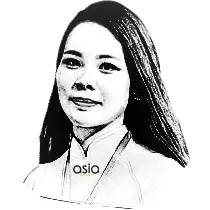
Japan Special Interest Tours
With an incredibly unique culture, plenty of attractive landmarks and enchanting natural wonders, Japan is one of the most alluring countries in the world that can cater to every personal interests and hobby. At Asia Private Tours, we are offering travellers a hand-picked collection of Japan...
View itineraries

Japan Classic Highlights
Our best Japan Classic itineraries offer you a great chance to enjoy the beauty of country’s highlights & must-see sites in Japan – from the population destinations in renowned cities such as Tokyo, Kyoto, Hokkaido and Osaka, as well as the white sandy beaches of Japan in Okinawa with...
View itineraries

Japan Family Tours
Japan may not immediately spring to mind for a family holiday when you travel to Asia, but it is an amazing destination where there is always something for any member. To give you and your kids the best travel experience, our best Japan Family Tours offer an extensive list of exciting outdoors...
View itineraries

Japan Beach Holidays
If you take a look at the world map, you’ll realize that Japan is surrounded by the sea, and that means there are plenty of amazing and white sandy beaches (e.g., Okinawa, Shikoku, Kyushu and near Tokyo) with crystal clear waters and the diverse marine underwater world for beach lovers....
View itineraries

Japan Honeymoon Tours
Why you should choose Japan for your honeymoon? Well, because Japan has it all – a perfect blend of ancient traditions, culture, delicious cuisine, exciting outdoors (e.g., snorkelling, swimming, skiing and hiking) and variety of picturesque scenery (e.g., impressive Mount Fuji, beautiful beaches...
View itineraries

Japan Day Trips & Short Breaks
Whether you’re short on time or simply look for some short tours but still want to experience the most of Japan has to offer, don’t hesitate to take a peek at our best Japan Day Trip & Short Breaks tour packages. This collection is carefully created to help you visit the highlights (e.g.,...
View itineraries

Japan Active Tours
Made up of over 3,000 islands with two-thirds of which is mountains, Japan is without a doubt a captivating paradise for nature lovers and adventure seekers. From north to south, this Asian country offers tourists a variety of active outdoors and thrilling travel experiences, such as hiking through...
View itineraries

Japan Special Interest Tours
With an incredibly unique culture, plenty of attractive landmarks and enchanting natural wonders, Japan is one of the most alluring countries in the world that can cater to every personal interests and hobby. At Asia Private Tours, we are offering travellers a hand-picked collection of Japan...
View itineraries

Japan Classic Highlights
Our best Japan Classic itineraries offer you a great chance to enjoy the beauty of country’s highlights & must-see sites in Japan – from the population destinations in renowned cities such as Tokyo, Kyoto, Hokkaido and Osaka, as well as the white sandy beaches of Japan in Okinawa with...
View itineraries

Japan Family Tours
Japan may not immediately spring to mind for a family holiday when you travel to Asia, but it is an amazing destination where there is always something for any member. To give you and your kids the best travel experience, our best Japan Family Tours offer an extensive list of exciting outdoors...
View itineraries

Japan Beach Holidays
If you take a look at the world map, you’ll realize that Japan is surrounded by the sea, and that means there are plenty of amazing and white sandy beaches (e.g., Okinawa, Shikoku, Kyushu and near Tokyo) with crystal clear waters and the diverse marine underwater world for beach lovers....
View itineraries

Japan Honeymoon Tours
Why you should choose Japan for your honeymoon? Well, because Japan has it all – a perfect blend of ancient traditions, culture, delicious cuisine, exciting outdoors (e.g., snorkelling, swimming, skiing and hiking) and variety of picturesque scenery (e.g., impressive Mount Fuji, beautiful beaches...
View itineraries

Japan Day Trips & Short Breaks
Whether you’re short on time or simply look for some short tours but still want to experience the most of Japan has to offer, don’t hesitate to take a peek at our best Japan Day Trip & Short Breaks tour packages. This collection is carefully created to help you visit the highlights (e.g.,...
View itineraries

Japan Active Tours
Made up of over 3,000 islands with two-thirds of which is mountains, Japan is without a doubt a captivating paradise for nature lovers and adventure seekers. From north to south, this Asian country offers tourists a variety of active outdoors and thrilling travel experiences, such as hiking through...
View itineraries

Japan Special Interest Tours
With an incredibly unique culture, plenty of attractive landmarks and enchanting natural wonders, Japan is one of the most alluring countries in the world that can cater to every personal interests and hobby. At Asia Private Tours, we are offering travellers a hand-picked collection of Japan...
View itineraries

















650-388.jpg)











